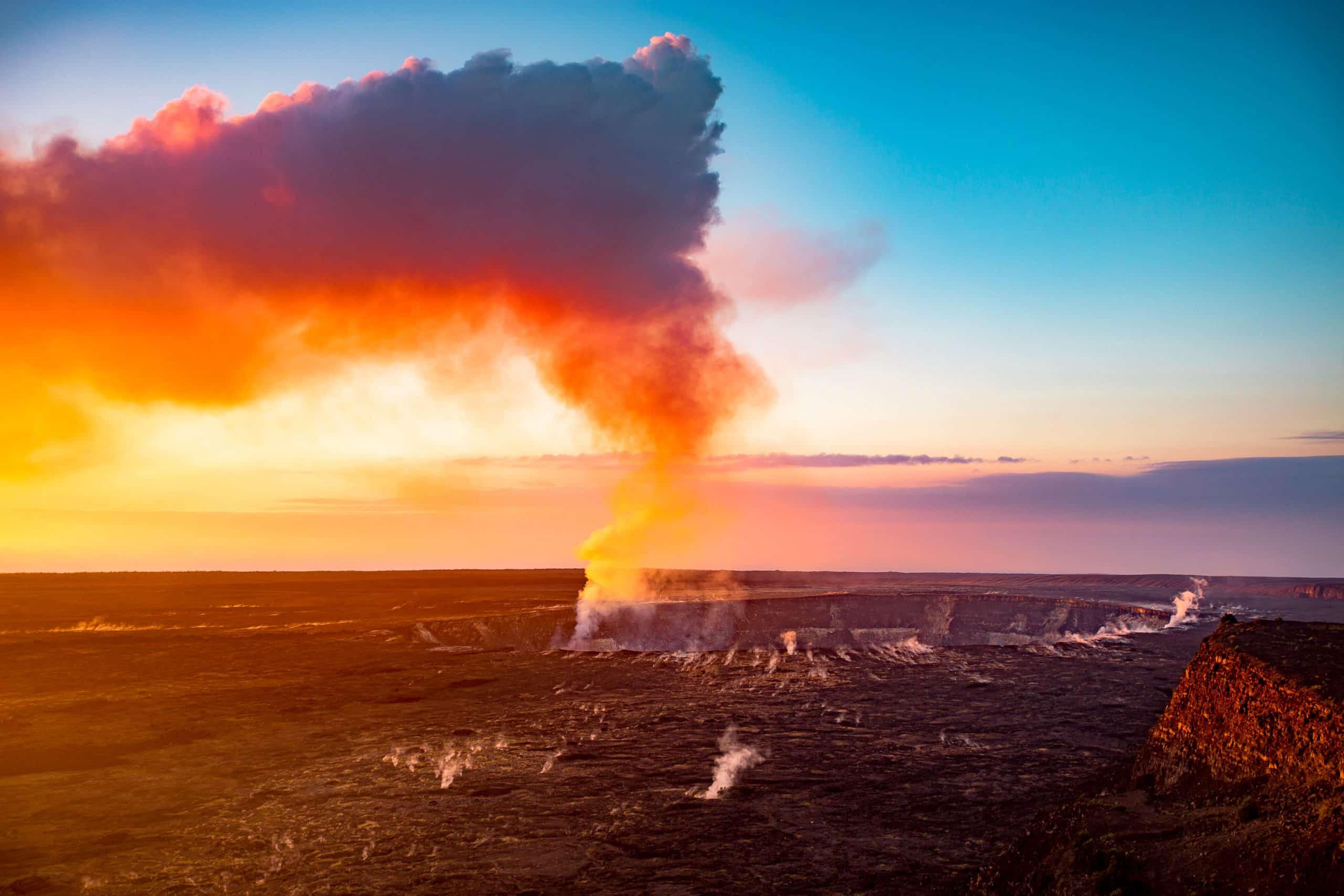
The Big Island’s Hawaii Volcanoes National Park is Like No Other Place In the World.
I still remember the feeling right after booking my tickets to Hawaii Volcanoes National Park, thinking, “wow, I’m about to see a real, live volcano.”
Few things excite like the prospect of seeing red hot lava up close and in person. If you’re visiting Hawaii, let alone the big island, you just have to add this national park to your list.
Most people visiting Hawaii overlook the big island, booking trips to resort-laden Maui or bustling Oahu. Those islands are great, but for an adventure hound like me, there was only one island and one park for my first visit.
Here’s what I loved (and didn’t) about visiting Hawaii Volcanoes National Park.
About My Travels to Hawaii Volcanoes National Park
I first visited Hawai’i Volcanoes National Park back in 2016, prior to the most recent eruptions, which significantly shaped the landscape of the park.
The primary goal of my visit was to experience the park to its fullest and capture the essence of the place for a film my brother Jim and I produced on the park.
The dynamic contrasts of this park totally blew me away.
To do this, we traveled every road in the park, visited every overlook, and went on most of the hikes. Considering Hawaii Volcanoes Park is more than 500 square miles, this was quite a feat.
It was an unforgettable adventure – so much so that I’ve been back several times since.

Hawai’i Volcanoes National Park Guide
Contents
- About the Park
- History
- Map
- Directions & Location
- Video
- Weather & Seasons
- Things to Do
- Camping & Lodging
- Photos
About Hawai’i Volcanoes National Park
Situated on the big island of Hawaii in the heart of the remote North Pacific, Hawai’i Volcanoes boasts an awe-inspiring array of massive mountains, exotic wildlife, and fiery volcanoes.
Journey with More Than Just Parks as we discover an ever-growing land shaped by fire. This is Hawai’i Volcanoes.
Hawai’i Volcanoes is one of only a handful of tropical National Parks in the system and one of two Hawaii National Parks. It is also a UNESCO World Heritage site.
The proper spelling of Hawaii for the purposes of the park’s title is actually Hawai’i Volcanoes National Park.
*For the purposes of this post, I’ll be using the spellings interchangeably so folks searching for this info will be able to find it, as the former is the more searched term.

Things to Know Before You Visit Hawaii Volcanoes
- The entrance fee for Hawaii Volcanoes is $30 per vehicle. It makes sense to purchase the interagency pass, “America the Beautiful,” to get access to all the NPS sites in Hawaii plus 2,000 other public lands for a year.
- Most sunscreens are illegal in Hawaii due to the effects of the chemicals in them on the coral reefs. Confirm your sunscreen is “Reef-Safe.” We recommend this one because it checks all the right boxes and is approved by Hawaii.
- Look, but don’t touch sea turtles – they are protected under the Endangered Species Act. Believe it or not, touching one is a felony.
- Carry an updated map and guidebook with you. You can’t rely on your mobile phone for maps.
Details About Hawaii Volcanoes National Park
Location: The Big Island of Hawaii
Established: August 1, 1916
How Big Is Hawaii Volcanoes National Park?: 323,431 acres (505 square miles)
Native Land: Aliʻi
Visitors: 1,580,961 (2022)
History of Hawaii Volcanoes National Park
Native Peoples
According to the National Park Service, Polynesians from the Marquesas Islands were the first to settle on Hawai’i over 1000 years ago.
To reach the islands, the Polynesians traveled more than 2000 miles across the ocean in hand-hulled canoes using little more than the sun & stars to navigate.
Eventually, the Ali’i people were formed and ruled over the island, installing a strict caste system. The natives built monuments, farmed, fished, and lived on the islands.
The Arrival of Westerners
After James Cook happened upon the islands in the late 1700s, Westerners began traveling to the previously unknown (to them) area.
In the 1800s, western travelers began exploring the volcanic works and spreading the word of their wonders.
Mark Twain made his way to the lava lake and was astonished by what he saw, writing, “Here was room for the imagination to work!“
Establishment of the National Park
In the early 1900s, a local publisher, Lorrin Thurston, along with an astrologist, Dr. Thomas Jaggar, began pushing for the area to be conserved as a public park.
President Wilson eventually answered their call creating the country’s 13th national park with the stroke of his pen on August 1, 1916.
At the time, the park encompassed volcanic areas on the islands of Hawaii and Maui.
Fifty years later, the areas were separated into Haleakala National Park on Maui & Hawai’i Volcanoes National Park on Hawaii.
RELATED: If you’re interested in learning more about island history, check out our Cumberland Island post.
Hawaii Volcanoes National Park Map
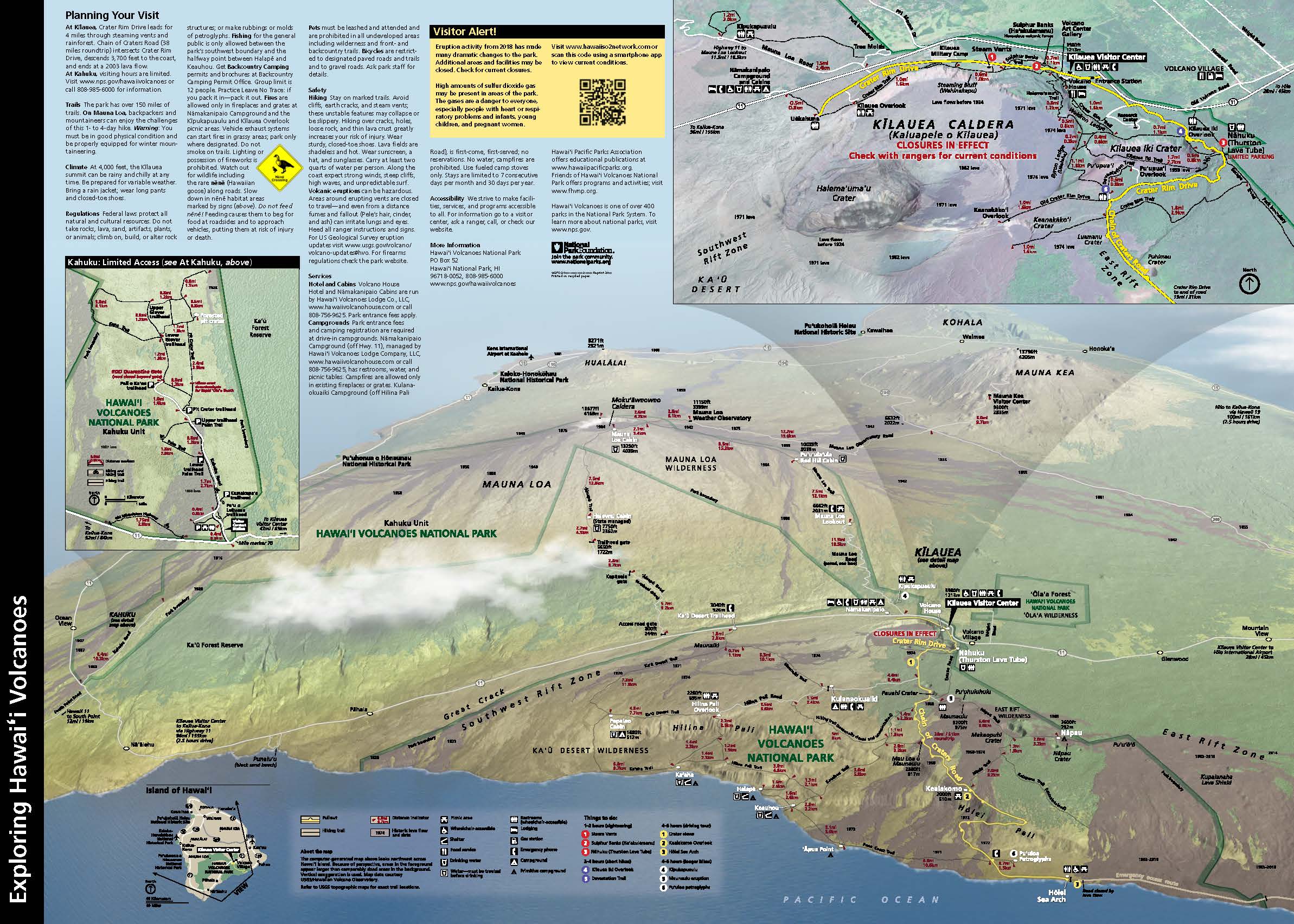
Where is Hawaii Volcanoes National Park?
Hawaii Volcanoes National Park is located on the big island of Hawaii in the state of Hawaii. The park is situated on the island’s southeastern corner.
Getting to the Park – Directions & Location
Closest Airport: ITO – Hilo International Airport. Distance: 30 miles from the national park (roughly 45 minutes driving)
Cheapest Airport: KOA – Ellison Onizuka Kona International Airport. Distance: 102 miles from the national park (roughly 2 hours driving).
The fastest way to get to Hawaii Volcanoes National Park is by plane, flying into Hilo International Airport. From there, the drive to the park is only 45 minutes. However, flights into Hilo are fewer and typically significantly more expensive than those into Kona.
I recommend flying into Kona, renting a car from the airport, and driving to the park.
Rental Car: KOA (Kona) Airport – (Hertz, Enterprise, Budget, Dollar, more)
Watch the Award-Winning Video
HAWAI’I VOLCANOES 8K is the culmination of several weeks spent filming in the rugged volcanic landscapes of Hawai’i Volcanoes National Park. Situated on the island of Hawaii in the heart of the remote North Pacific, Hawai’i Volcanoes National Park boasts an awe-inspiring array of massive mountains, rare wildlife, and fiery volcanoes.
Journey with More Than Just Parks as we discover an ever-growing land shaped by fire. This is Hawai’i Volcanoes. Filmed primarily in stunning UHD 8K.
Hawai’i Volcanoes National Park is an incredible place featuring the most active volcano in the world. Kilauea is constantly in a state of eruption.
This film was shot before much of the more recent explosive activity occurred and features some locations that have been significantly altered.
To create this film, we spent a few weeks in the park filming it all, from Nenes to Pele and everything in between.
Lens Rentals by Pro Photo Supply.
RELATED: 14 BREATHTAKING National Park Videos to Inspire Your Next Trip
Seasons & Weather
Like much of Hawaii, the weather at Hawaii Volcanoes National Park is incredibly unpredictable.
While warmth can generally be counted on (at least relative to where you might be coming from), even this is variable. Some nights in the park can be quite chilly.
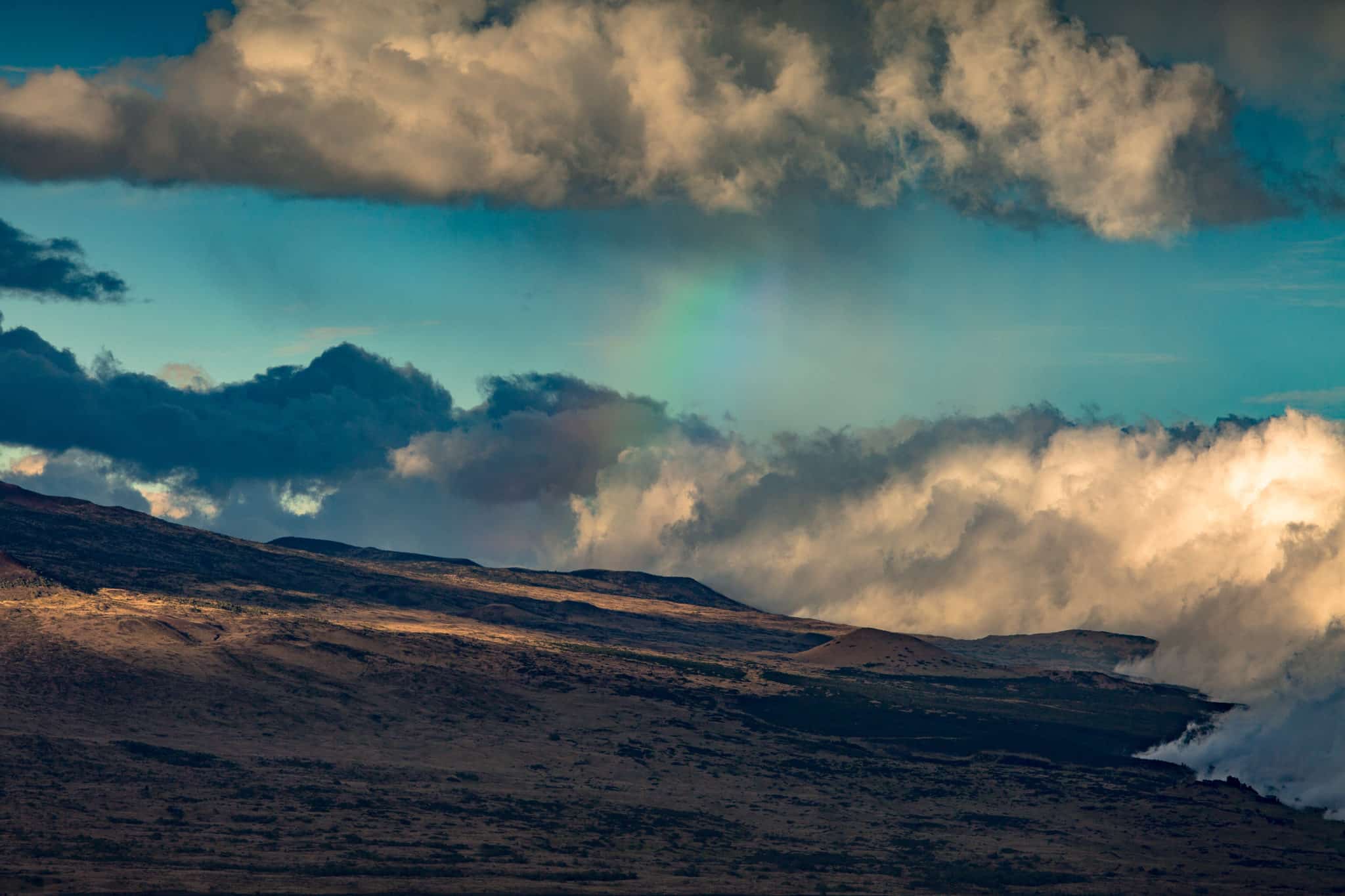
Best Time to Visit Hawaii Volcanoes
The best time of year to visit Hawai’i Volcanoes National Park is November through March, when most of the United States is cold for a warm, tropical getaway.
Due to its proximity to the equator, Hawai’i Volcanoes is relatively warm year-round.
One thing to note is that November-March is known as the rainy season, but don’t let that deter you from visiting, as rain typically goes as fast as it comes in Hawaii.
Who doesn’t dream of Hawaii during the dead of winter? It can’t just be me…
I would recommend visiting anytime between December through March.
Spring in Hawai’i Volcanoes National Park
Spring in Hawai’i Volcanoes is nice with reduced crowds, and warm temperatures but lots of rain, with each month seeing an average of 20 days with rainfall!
But don’t let that be a damper on your trip to the park. Rain typically doesn’t last all day, and even in the rain, there is still plenty to see and do in the park.
High temperatures will range from the mid-60s to the mid-70s, while lows will remain above 50F.

Summer in Hawai’i Volcanoes National Park
Summer in Hawai’i Volcanoes National Park sees less rain, warmer temperatures (with days in the mid-70s to 80s), larger crowds, and more humidity.
It’s no secret that summer is a great time to visit Hawai’i Volcanoes, but with this comes larger crowds. Don’t let the crowds deter you, though, as the crowds are here for a reason – it’s otherworldly.
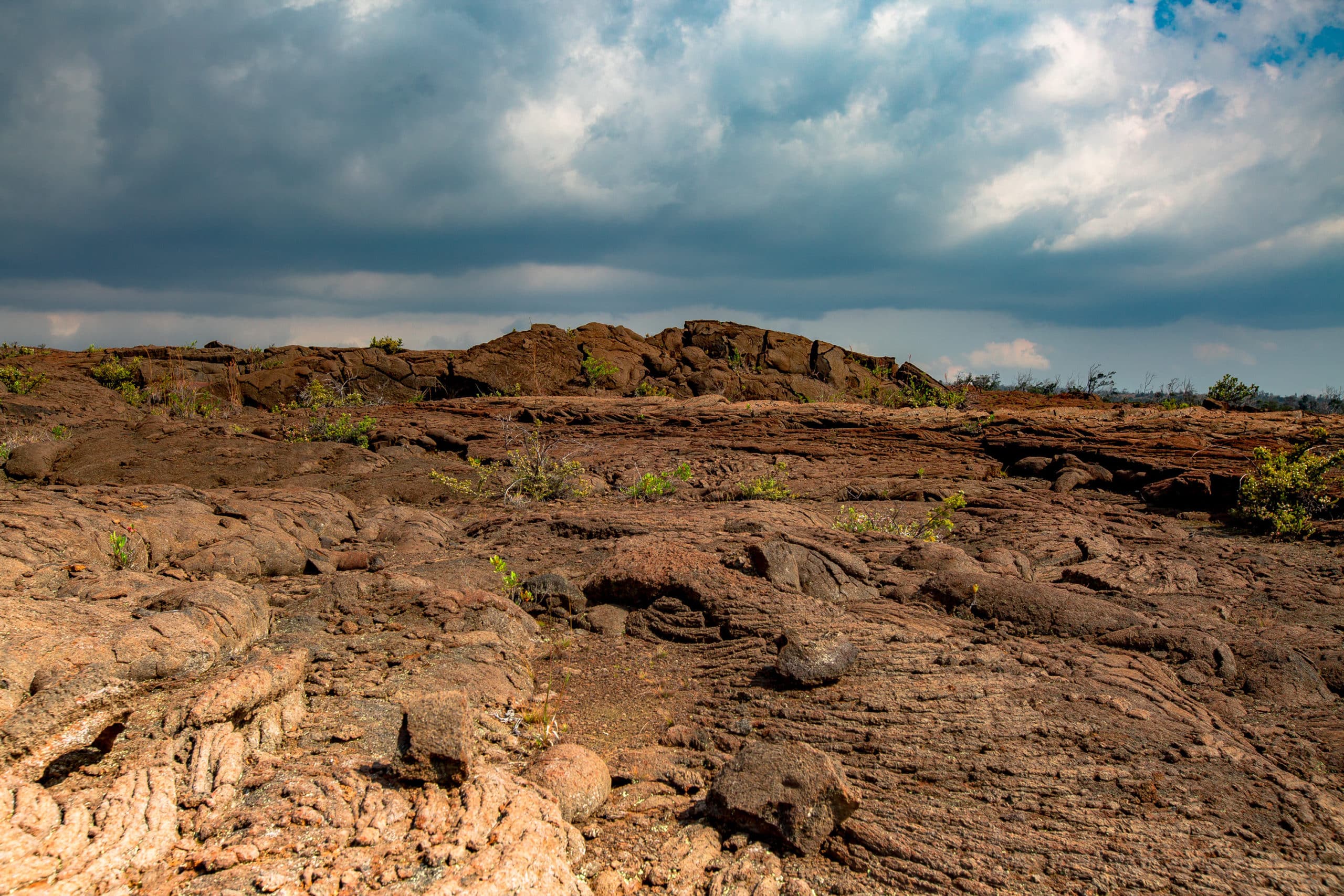
Fall in Hawai’i Volcanoes National Park
Fall in Hawai’i Volcanoes is great, with reduced crowds, reduced humidity, and less rain than other times of year. If it’s leaf peeping you after, this is not your park.
Fall is a great time to come and visit to escape the crowds that are seen during other times of the year, like Summer and Winter.
High temperatures will still be in the 70s, which makes this park an even more attractive autumn destination.
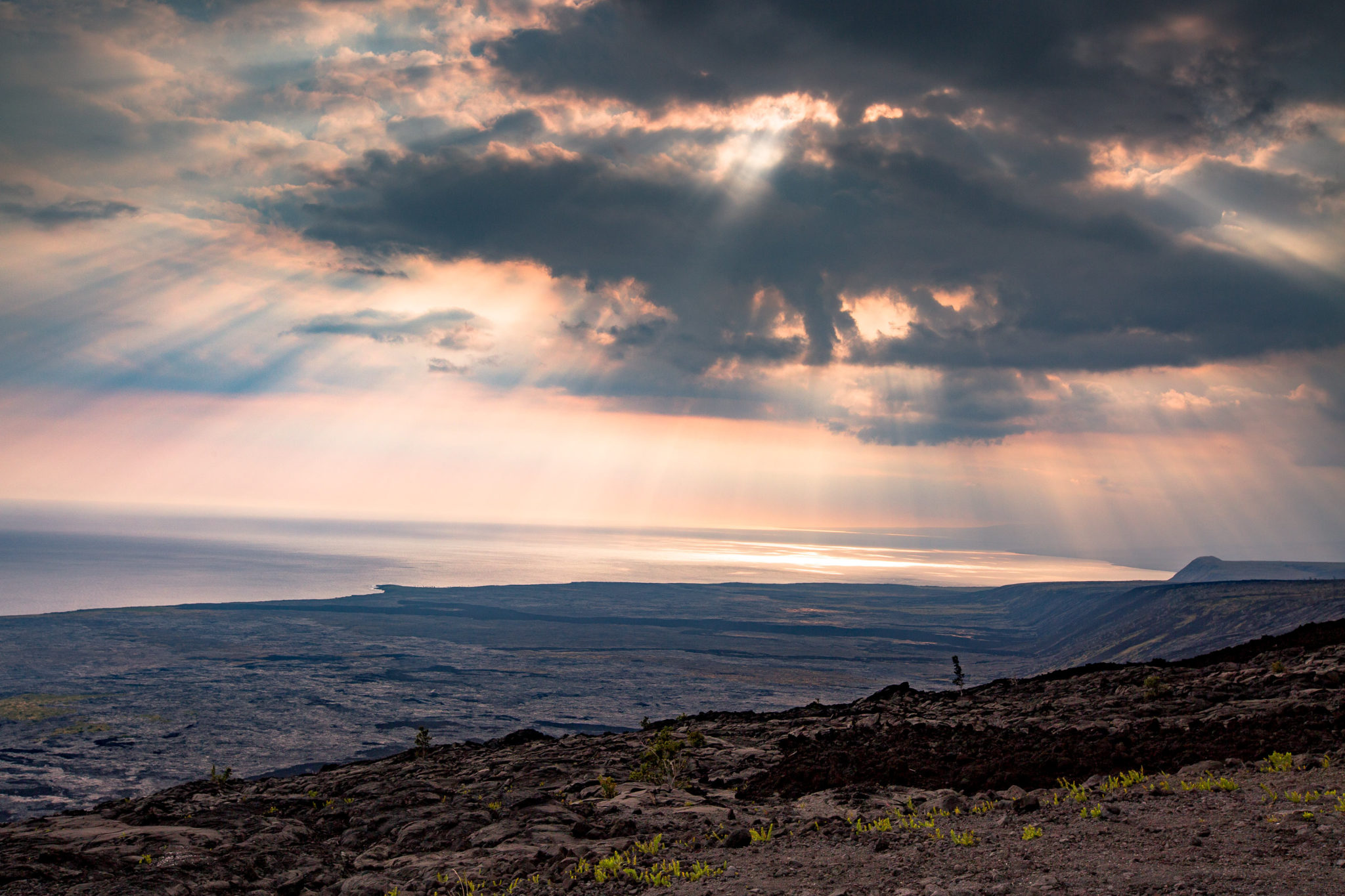
RELATED: 10+ Must See National Parks This Fall (A Stunning Guide)
Winter in Hawai’i Volcanoes National Park
Winter Winter in Hawai’i Volcanoes National Park is lovely with lesser crowds, reduced humidity, and less rainfall than other times of year.
Plus, who doesn’t want to escape the dreary cold of winter to warm and sunny Hawaii? Winter is probably the second most popular time of year to visit the park for that reason.
High temperatures still range in the high 60s during Winter in the park, while lows drop close to the 50F mark.
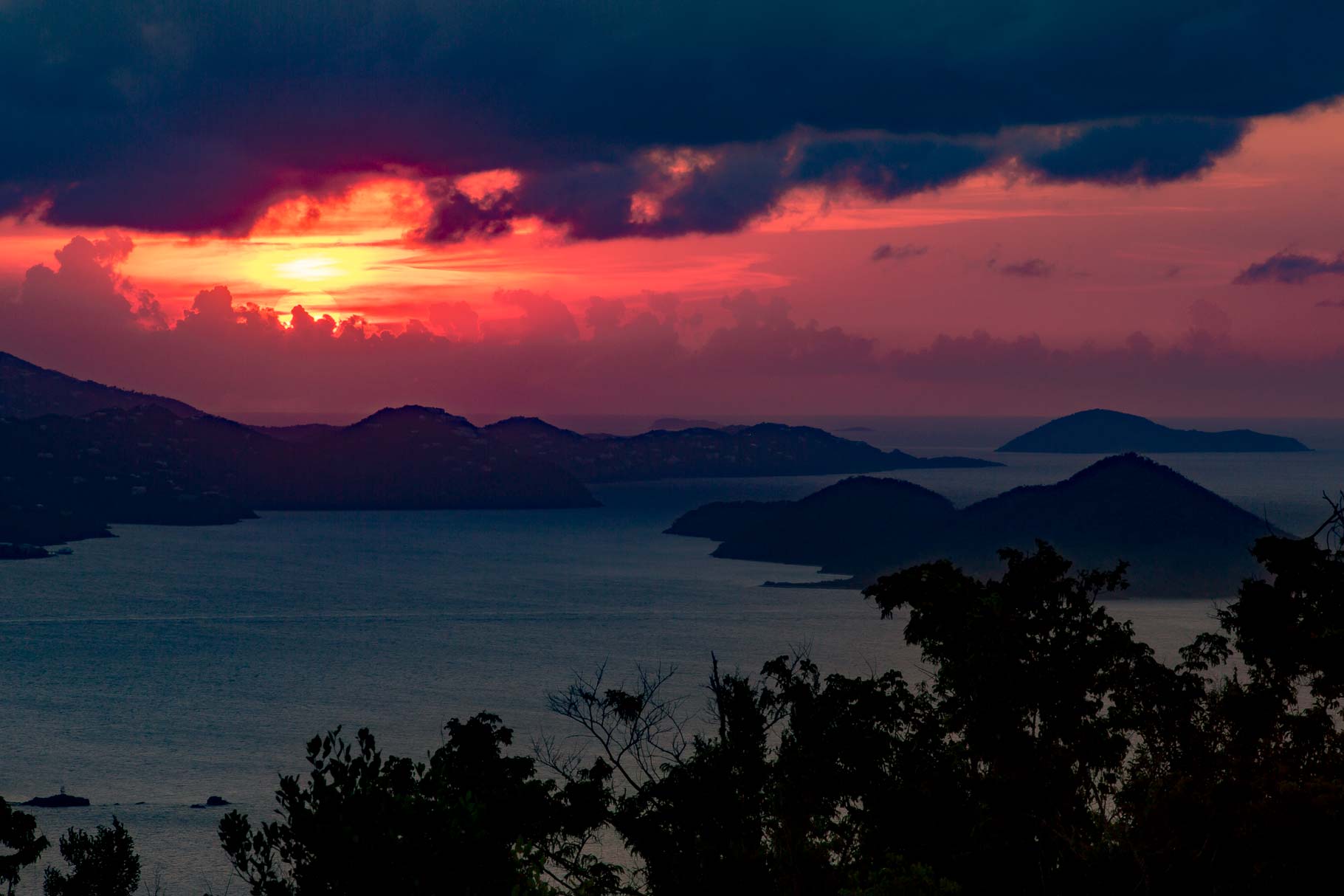
Best Things to Do in Hawaii Volcanoes National Park
Let’s start this chapter with the “what not to do.”
Don’t do one of the boat tours that drive insanely close to the steam clouds full of such fun things to breathe in as volcanic fiberglass and hydrochloric acid.
With that being said, Hawaii Volcanoes National Park is home to some of the most unique locations in the national park system, being situated on the big island of Hawaii in the remote North Pacific.
This is a land shaped by massive fiery volcanoes with rugged volcanic coastlines, underground cavernous lava tubes, and lush tropical vegetation.
We’ve detailed some of the best things to do in Hawai’i Volcanoes National Park below. For a complete list, visit our 8 (JAWDROPPING) Things to Do in Hawaii Volcanoes National Park article.

1. Marvel at the Epic Kilauea Crater

Kilauea Crater is possibly the most famous and well-known feature of Hawai’i Volcanoes National Park.
What was once home to an epic, world-renowned lava lake has emptied, filled with scalding hot water, emptied, re-filled with lava again, and has now “paused” as of this post.
It is easy to get a vantage of the crater from the area around the Kilauea Visitor Center.
Because of this, everyone visiting the park should stop by to check out this otherworldly site.
2. Explore the Wonders of Thurston Lava Tube
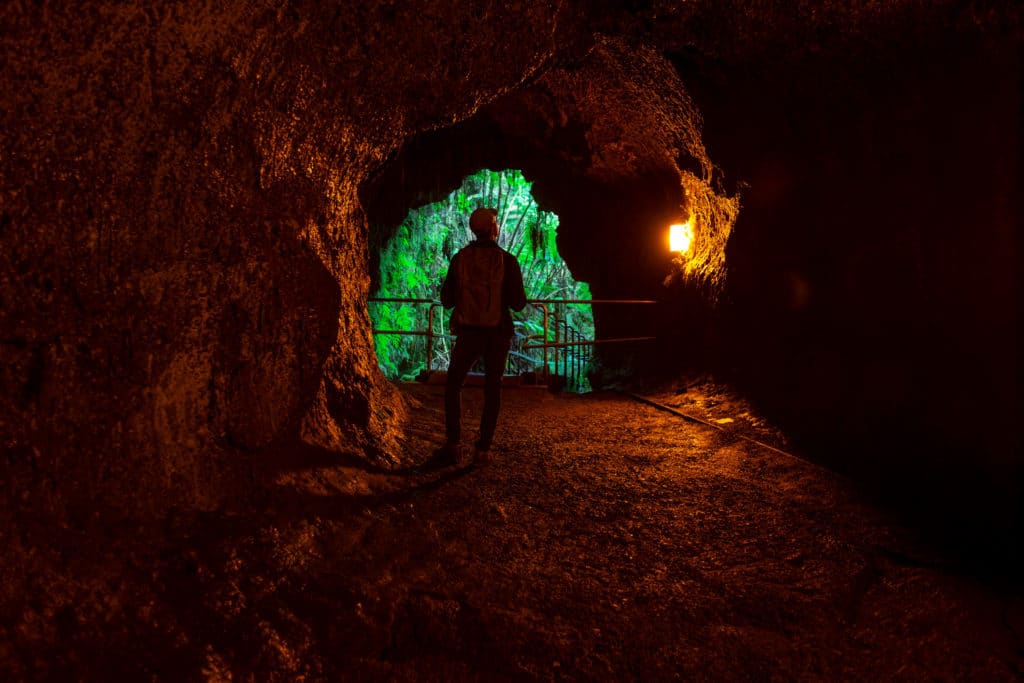
The Thurston Lava Tube is a 500-year-old lava tube located near the incredible Kilauea Crater in Hawai’i Volcanoes National Park.
Distance: 1 mile roundtrip
Time: 1 hour
This lava tube was carved out by a 2000F lava flow creating the subterranean cavern that exists today.
This hike through Thurston Lava Tube takes visitors through a lush tropical forest into the illuminated cavern below.
3. Hike the Kilauea Iki Crater

The Kilauea Iki Crater is a great spot for hikers to explore a crater at Hawaii Volcanoes National Park via the Kilauea Iki & Crater Rim Trails.
What was once a boiling lava lake is now a hardened surface for hikers to enjoy an afternoon in the park.
Distance: 3 miles roundtrip
Time: 2-3 hours
4. Drive the Stunning Chain of Craters Road
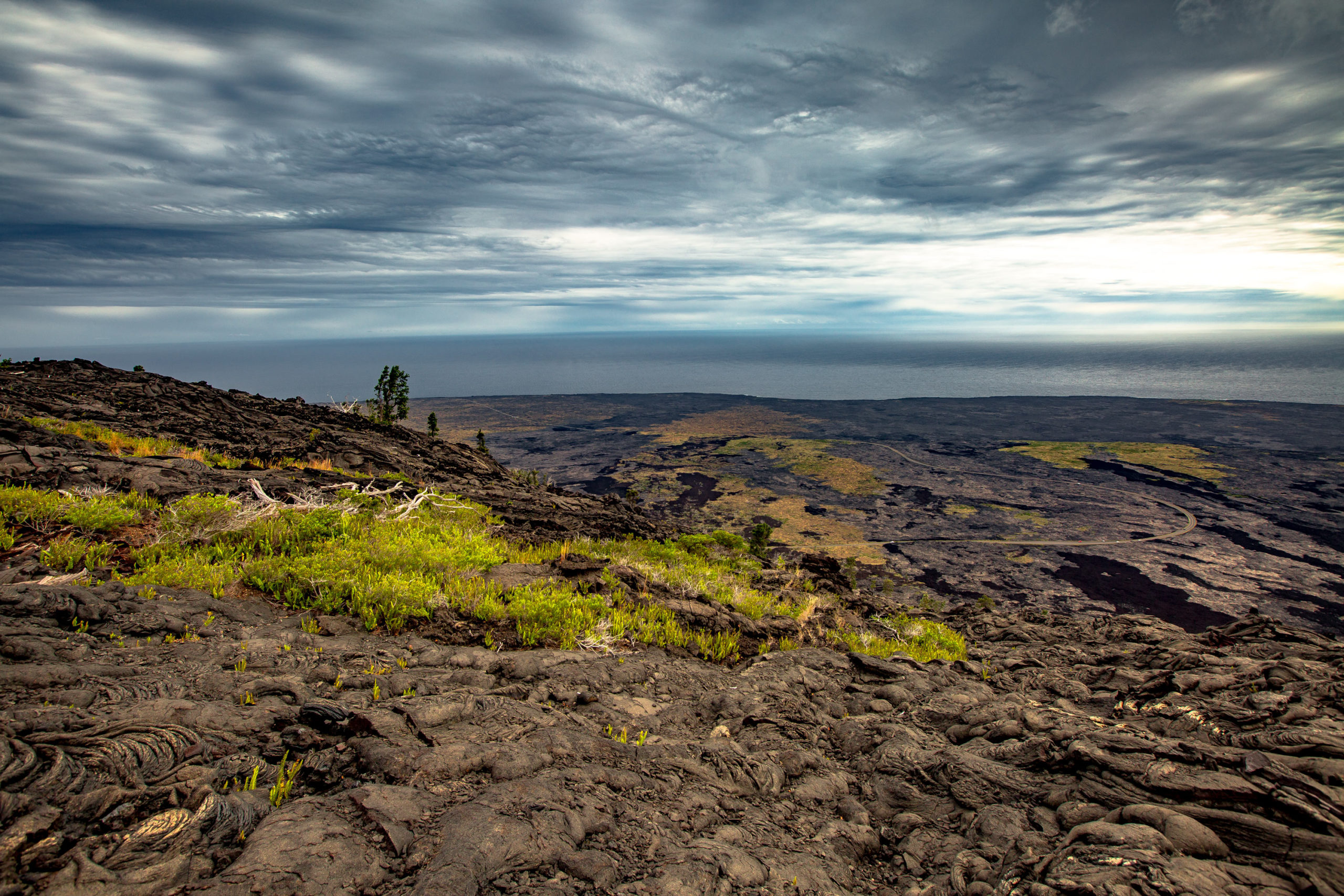
The Chain of Craters Road is a 19-mile scenic drive in Hawaii Volcanoes National Park with spectacular overlooks and otherworldly vistas.
Many rank this among the most scenic drives in all of Hawaii.
Length: 19 miles (one way)
Drive Time: 2 hours (with stops)
Since its initial construction, segments of the Chain of Craters Road have been repeatedly buried by lava flows. The road starts at Crater Rim Drive and winds its way down past the Holei Sea Arch on the coast.
5. Soak in the Panoramas from Mauna Loa Lookout
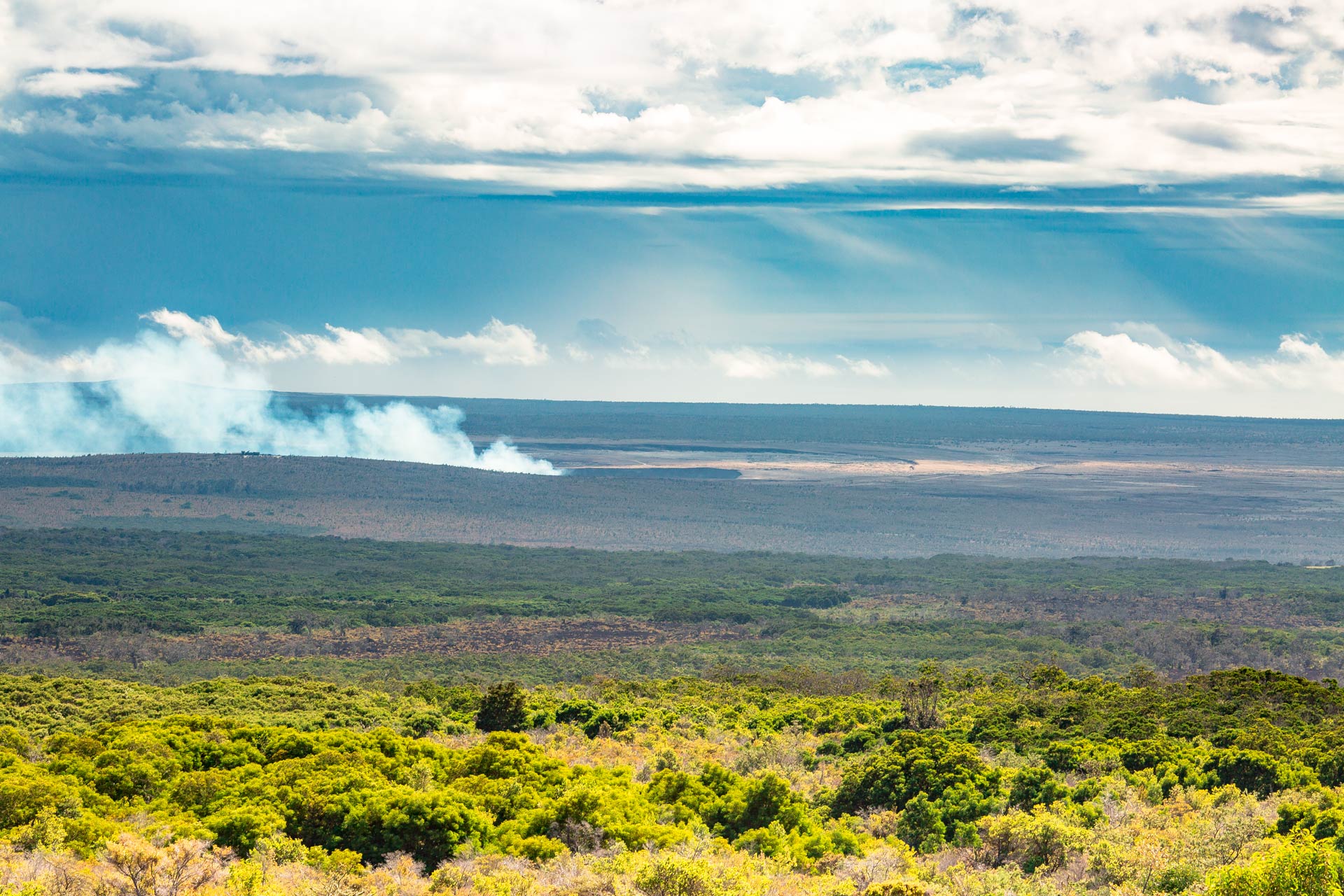
Mauna Loa Lookout is a beautiful viewpoint located at the end of an unpaved 11-mile road that overlooks the Kilauea Crater below and serves as the trailhead for hikers looking to summit the largest sub-aerial volcano in the world.
The drive up to the viewpoint is something in and of itself.
Lush tropical foliage, complete with the songs of vibrant tropical birds, surrounds you as you ascend the volcano.
Lucky visitors may even spot the endemic ‘i‘iwi in all its stunning red feathers.
6. Discover the Pu’u Loa Petroglyphs
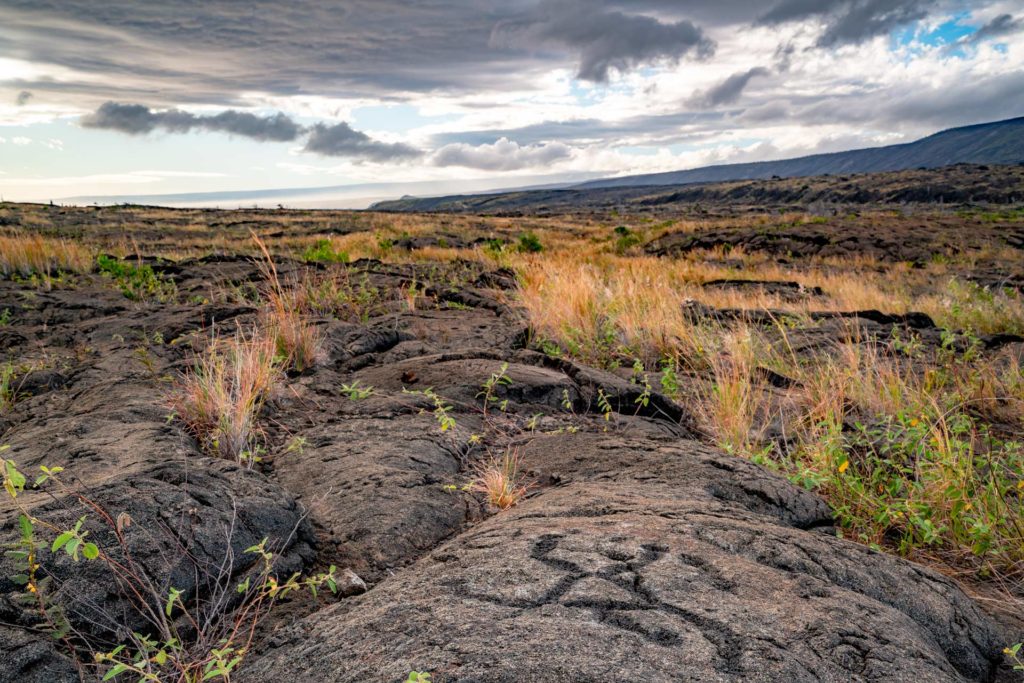
The Pu`u Loa Petroglyphs archeological site is a vast collection of over 23,000 petroglyphs located in Hawai’i Volcanoes National Park.
Distance: .7 miles roundtrip
Time: 1 hour
Given the amount of petroglyphs here, this site gives visitors an incredible opportunity to observe up close (without touching) an unbelievable array of petroglyphs dating back hundreds of years.
Where to Stay – Camping & Lodging
Hawai’i Volcanoes National Park only has 2 campgrounds with a mere 25 total campsites making it one of the parks with the fewest camping options for visitors.
Nāmakanipaio Campground
- 19 sites
- Year-Round
- Standard $15
- First-come / Reservation
- Cell Reception
Nāmakanipaio Campground is the most popular campground in Hawai’i Volcanoes National Park, located near all of the park’s most iconic attractions.
Privacy is limited as this campground is fairly open by design. Of the two campgrounds in the park, this is the best and the one we recommend to visitors.
Nāmakanipaio Campground sites feature picnic tables and fire pits. The campground itself features flush toilets and water.
Kulanaokuaiki Campground
- 9 sites
- Year-Round
- Free
- First come
- Cell Reception
Kulanaokuaiki Campground is a more remote campground located off of Hilina Pali Road in Hawai’i Volcanoes National Park.
It is by far the least popular of the two campgrounds the park offers visitors, being located further from many of the most popular attractions.
This campground is free and available to visitors on a first-come, first-serve basis.
Kulanaokuaiki Campground sites feature picnic tables and offer more privacy than Nāmakanipaio sites.
The campground itself features pit toilets and no water. Pets are not allowed in this campground to protect the endangered Nene.
Hawaii Volcanoes Hotels, Motels, & Resorts

Hawai’i Volcanoes National Park has a single flagship lodge inside the park with luxurious onsite dining options.
Lodging options inside the park include:
Lodging options outside the park include:
Where to Eat – Restaurants & Food Options

Hawai’i Volcanoes National Park has a number of dining options:
- Crater Rim Cafe
- Thai Thai Bistro
- Eagle’s Lighthouse Cafe
- Kilauea Lodge Restaurant
- Cafe Ono
- Tuk-Tuk Thai Food Truck
Driving in Hawaii Volcanoes National Park

Hawai’i Volcanoes National Park has no park shuttle to get around the park. To get around the park, visitors will need to bring their own mode of transportation.
A car is the best mode of transport in the park, and tourists not from the island should find a rental car.
Photos of Hawaii Volcanoes
Photos of Hawaii Volcanoes from the production of our film.
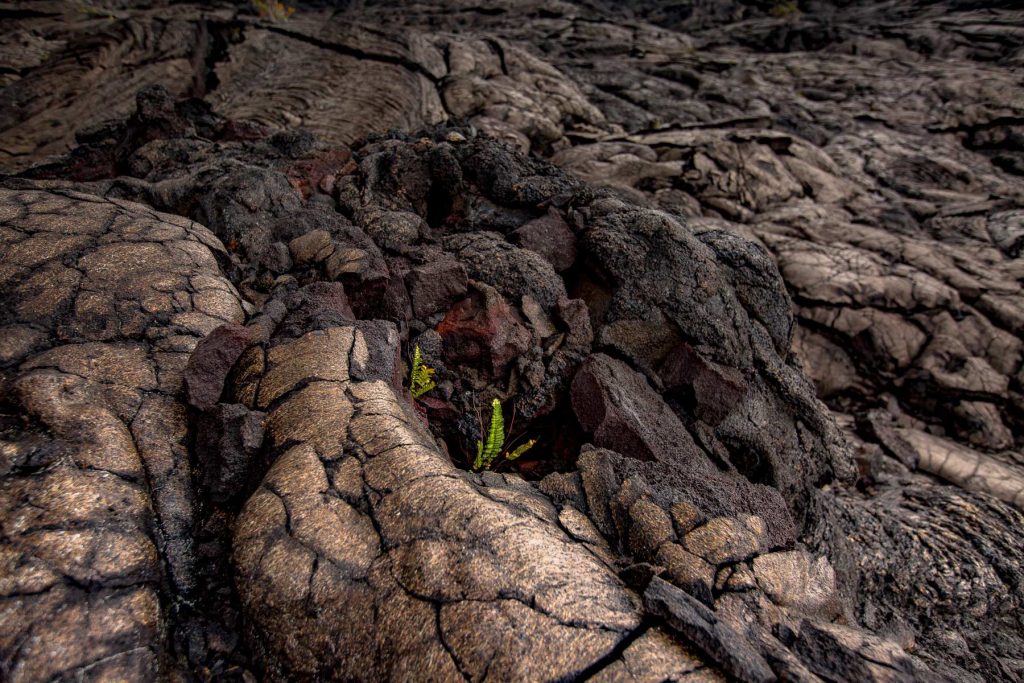
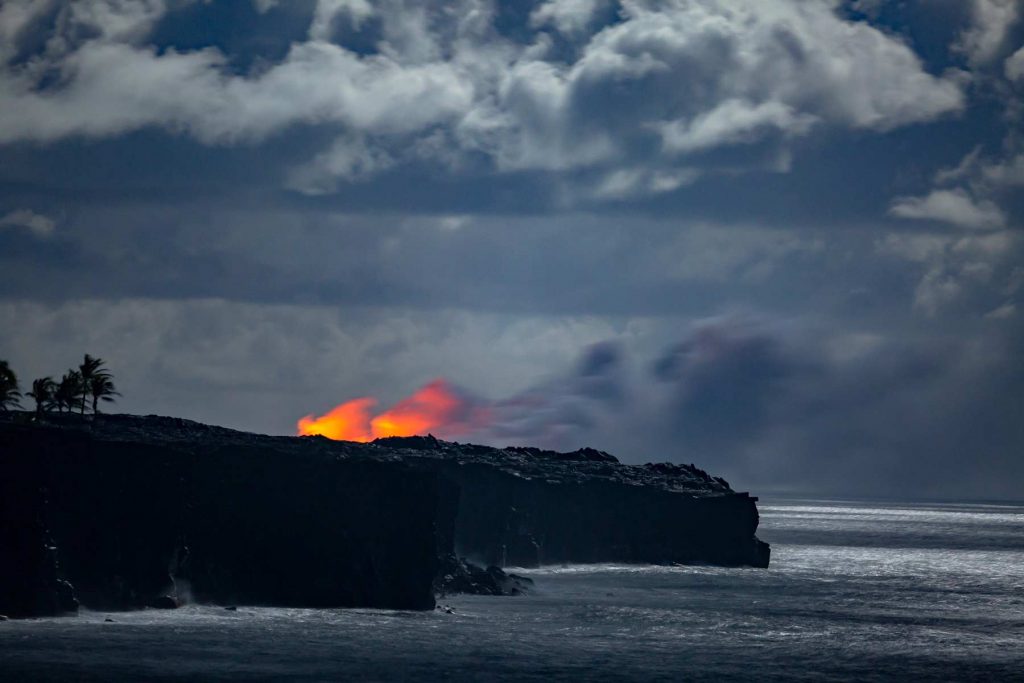
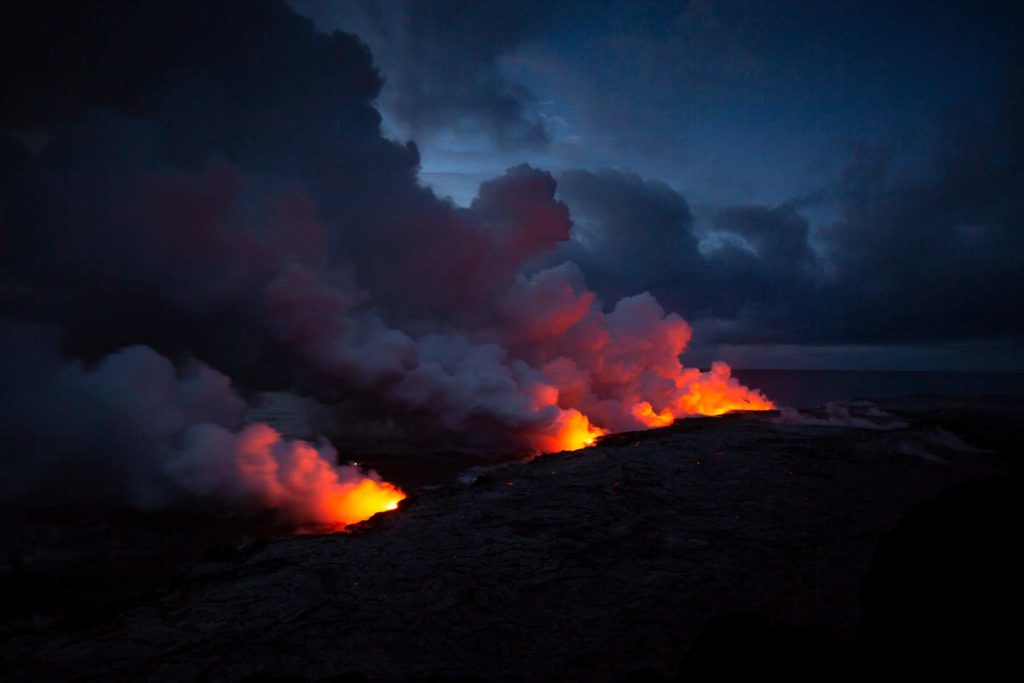
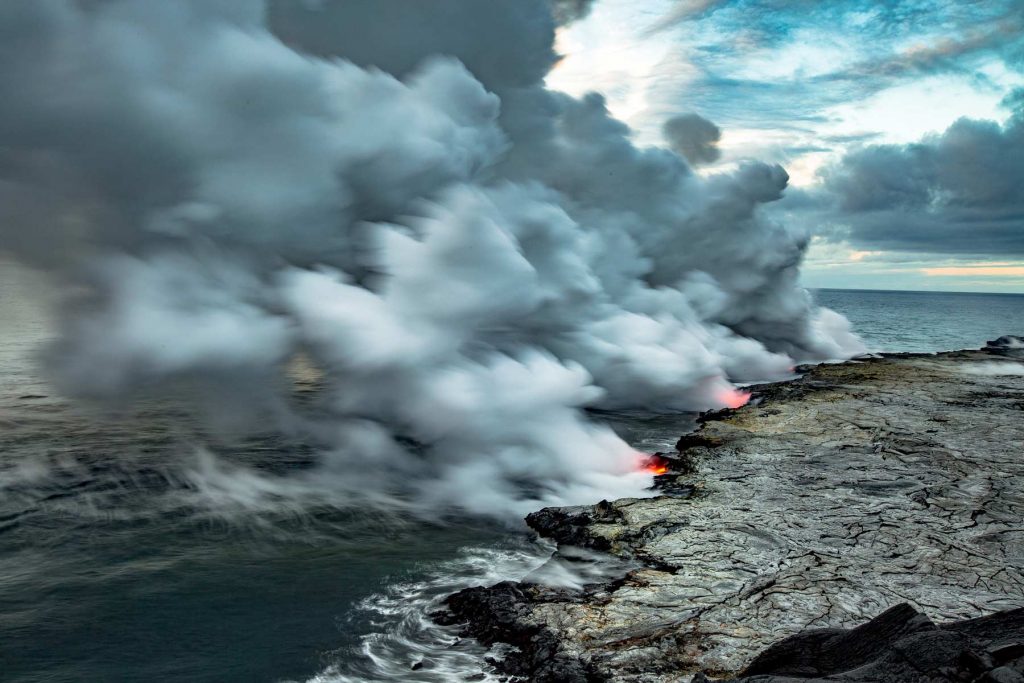

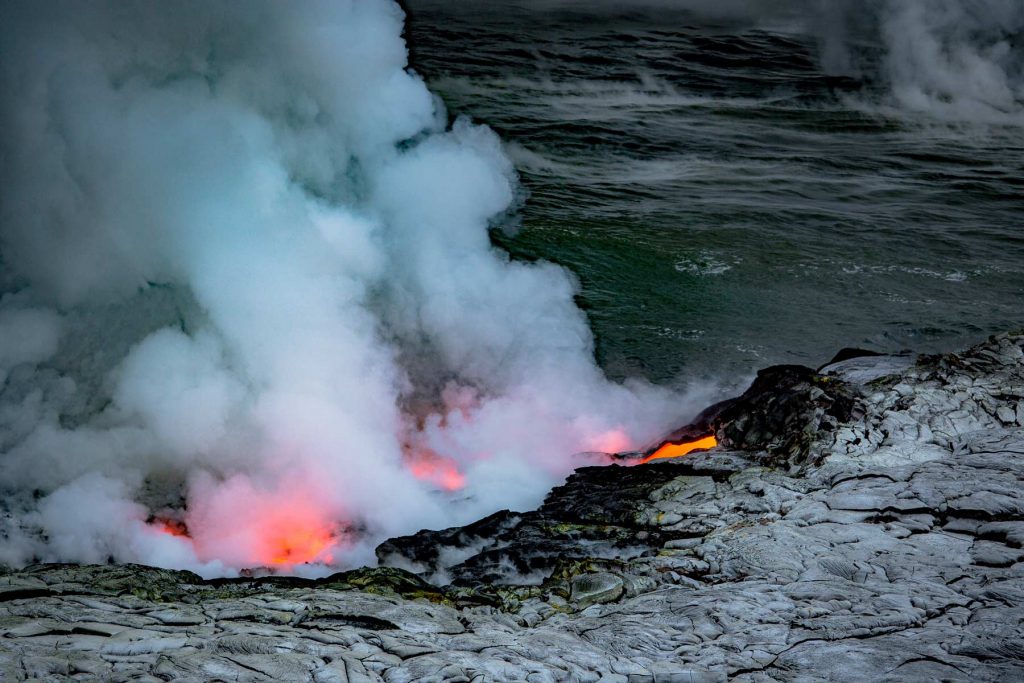


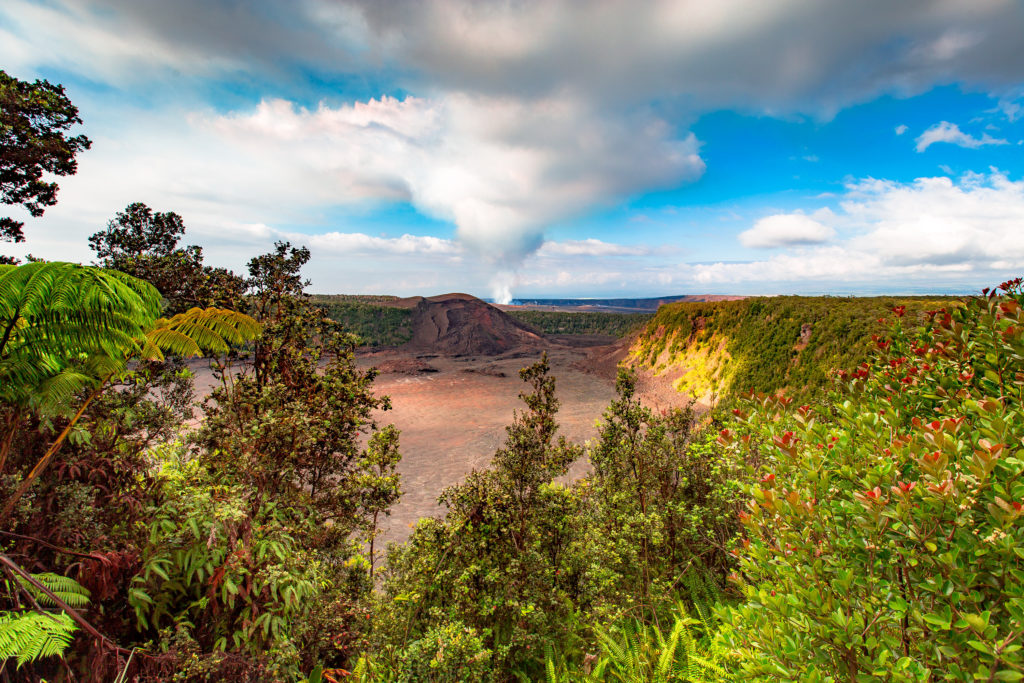
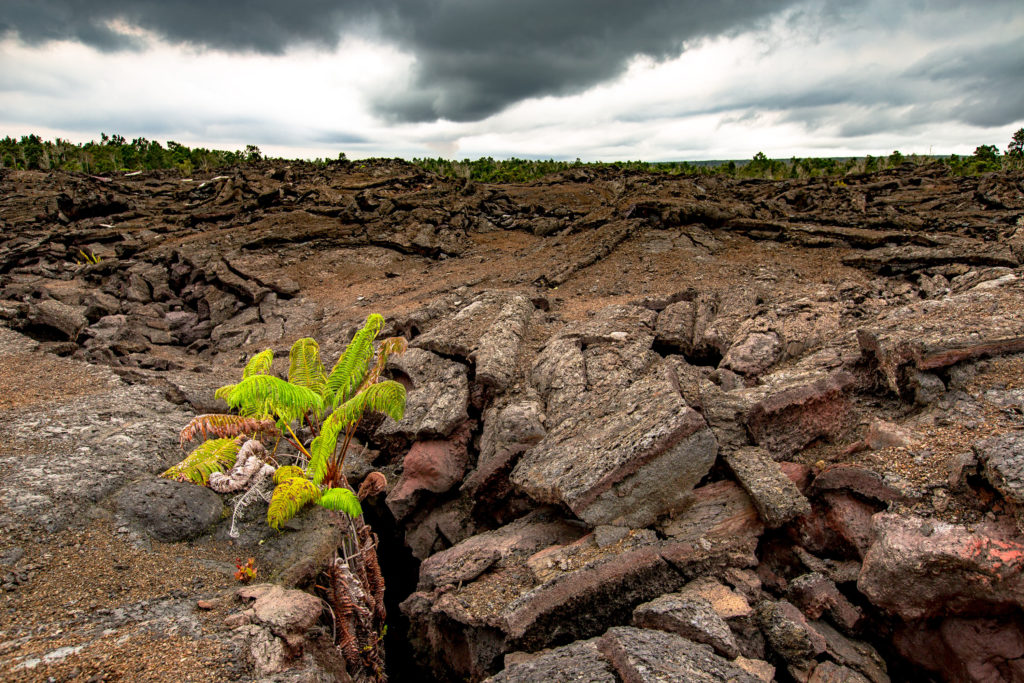

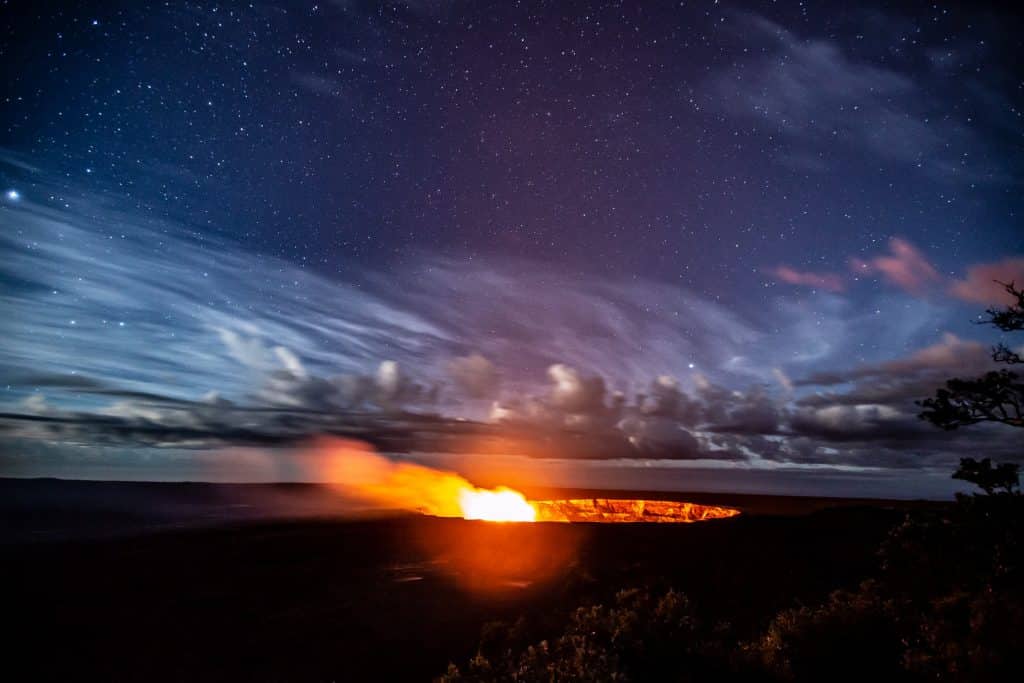
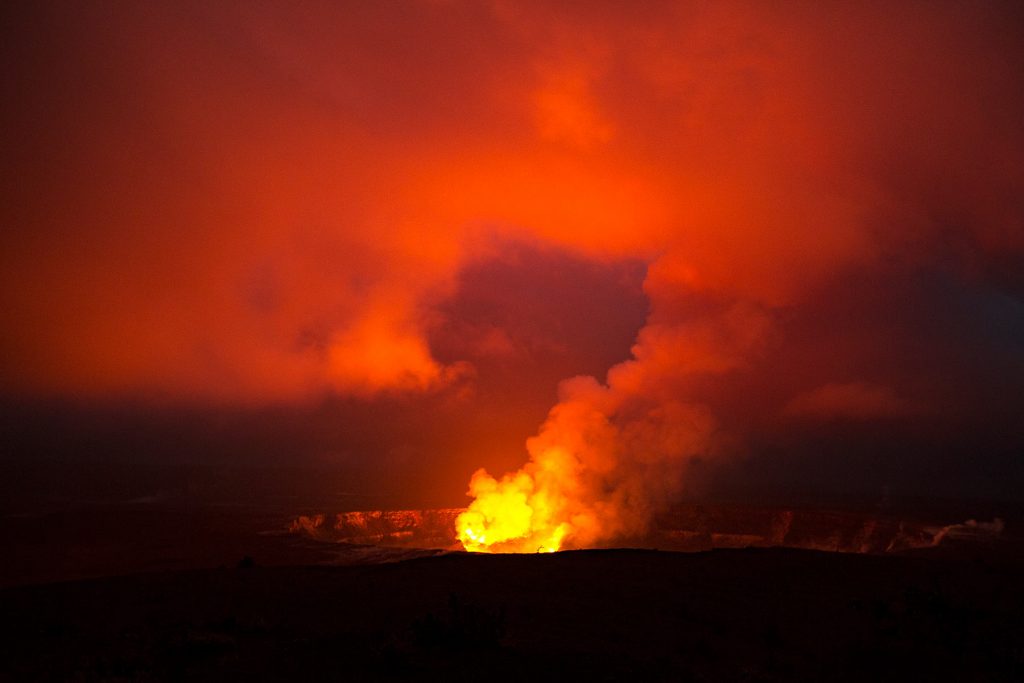
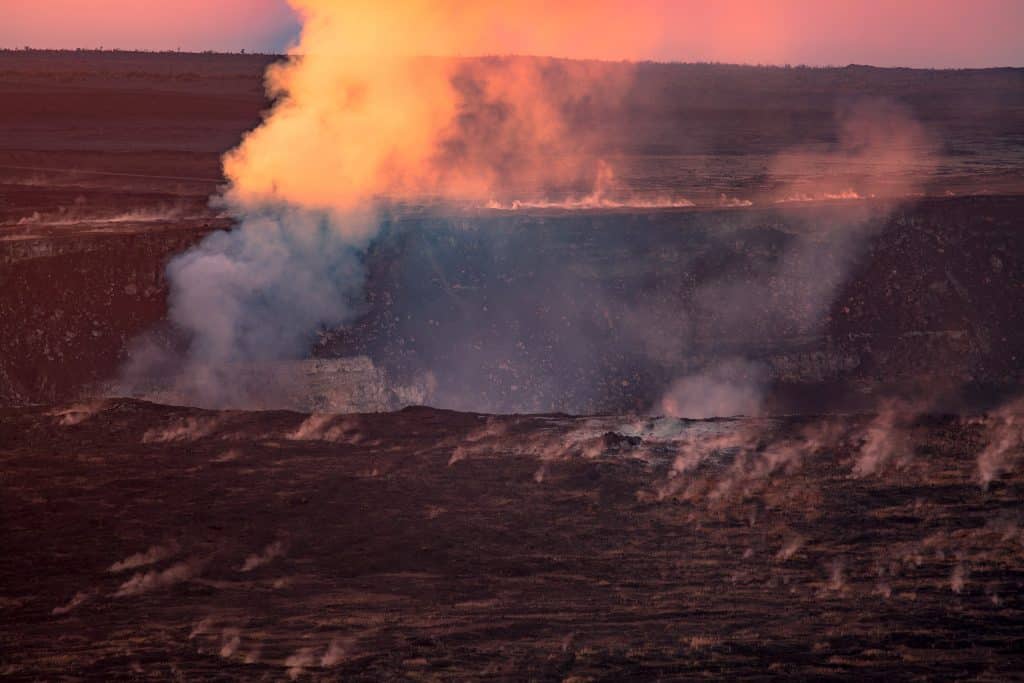
Summary | Leave us a Comment!
That’s a wrap, folks! Hopefully, you feel like you’ve got a good handle on your next trip to Hawaii Volcanoes National Park. Please leave me a comment below and let me know if you have any questions or comments.
So, I hope to see you on the trails sometime soon!
Helpful Related Articles
Things to Do Hawai’i Volcanoes NP: 17 STUNNING Things to Do Hawaii Volcanoes (Photos + Helpful Advice)
Hawai’i Volcanoes NP Guide: Expert Guide to Hawai’i Volcanoes National Park
Hawaii National Parks Guide: Expert Guide to the Hawaii National Parks
Haleakala NP Guide: Expert Guide to Haleakala National Park
Things to Do Haleakala NP: 11 BEST Things to Do in Haleakala National Park



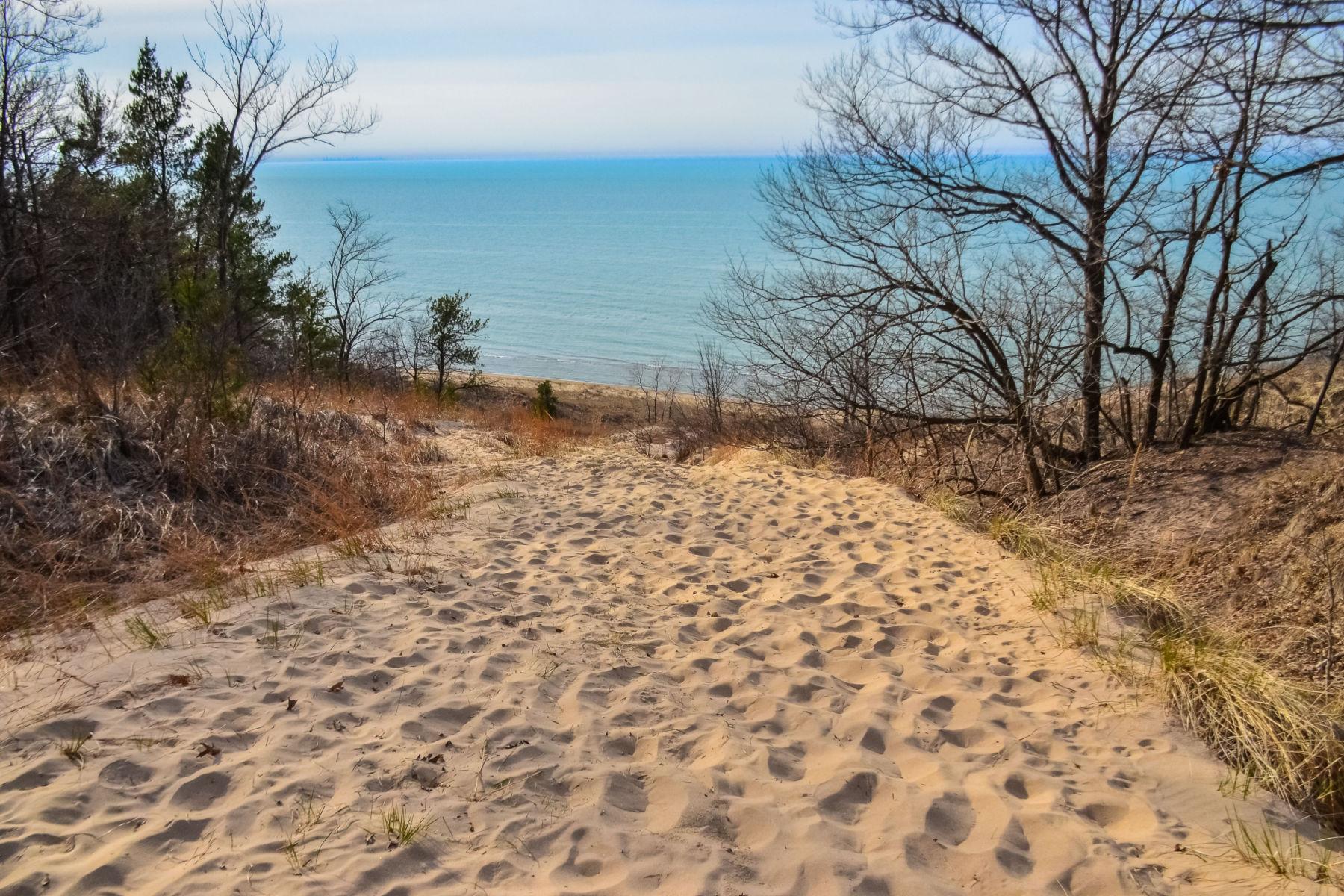

It’s still the North Pacific
Right you are – corrected!
Thanks, Bryan.
I was disappointed to see the “what not to do” section did not mention anything about the culture, beliefs, or how to behave at the parks. These are sacred Hawaiian lands. If you’re going to write about them, educate the tourists and yourselves on what the natives may want visitors to know and respect while visiting different parks, states, and cultures.
We arrive in Hilo by cruise ship (February 7)
I see that there is a local bus to Volcano village
Would taking this and walking to the park entrance enable us to go into the park and see much?
We only have a few hours, so can’t do many of the excellent things you mention, but even a brief visit would be fun.
Thank you
Hey Andrew,
How exciting! From the visitor center you can see the “main” caldera which is pretty epic. You can hike the sulphur banks trail past the steam vents and along the rim which is cool. I’d also recommend grabbing a bite at the Volcano House which overlooks the caldera and has the best views of it.
Getting to the Thurston Lava Tube would require about a 2 mile hike (each way) from the visitor center. Depending on how much time you have that’s a great experience. I estimate it would take about 2 – 3 hours total depending on your pace. Could be done faster but unlikely.
My parents recently did this exact trip from a cruise and loved it for what it’s worth. They skipped Thurston and stuck to the first couple of options I mentioned.
Let me know if that’s helpful & if you have any further questions!
Best,
Will